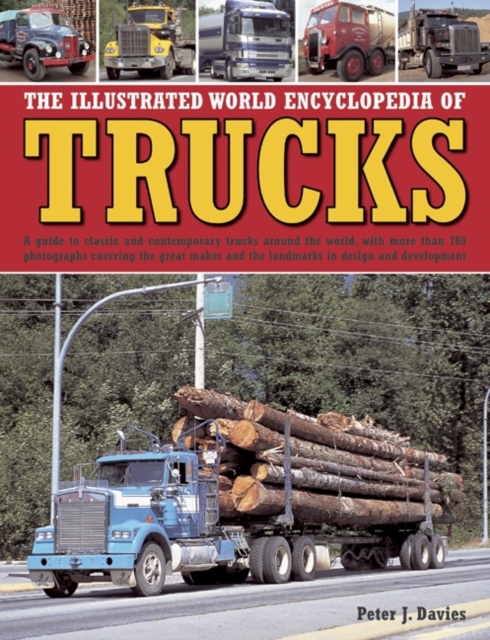
The Illustrated World Encyclopedia of Trucks : A Guide to Classic and Contemporary Trucks Around the World, with More Than 700 Photographs Covering the Great Makes and the Landmarks in Design and Deve Hardback
by Peter J. Davies
Hardback
Description
This title features a photographic A-Z directory of over 280 makes, including all the most successful manufacturers as well as many lesser-known brands.
It is a comprehensive reference to every type of truck: general load carriers, box vans, curtainsiders and tankers.
It features a range of specialized trucks such as concrete mixers, self-loading trucks, furniture-removal vans, refuse trucks, fire trucks, recovery trucks, logging trucks, heavy-haulage trucks, military trucks and mobile cranes.
It is a history of the truck, its origins and evolution, from the early pioneers to today's modern load carriers.
It includes a useful glossary of truck terminology to help you distinguish between the different types of vehicle.
This wonderfully illustrated book begins with a history of the truck, covering its origins, evolution, and the early pioneers of truck design and engineering.
A wide variety of trucks are featured, with more than 700 photographs, from general load carriers such as box vans and furniture-removal vans, to specialized vehicles such as fire trucks, military trucks and mobile cranes. Trucks from Europe, North America and many other countries are discussed, highlighting differences in design and the manufacturers who made them.
Each vehicle is put into historical context, showing its uses, how it reached its current position in the market, or how production resulted in its demise.
Information
-
Out of Stock - We are unable to provide an estimated availability date for this product
- Format:Hardback
- Pages:256 pages, over 700 photographs
- Publisher:Anness Publishing
- Publication Date:10/10/2013
- Category:
- ISBN:9780754827641
Information
-
Out of Stock - We are unable to provide an estimated availability date for this product
- Format:Hardback
- Pages:256 pages, over 700 photographs
- Publisher:Anness Publishing
- Publication Date:10/10/2013
- Category:
- ISBN:9780754827641






